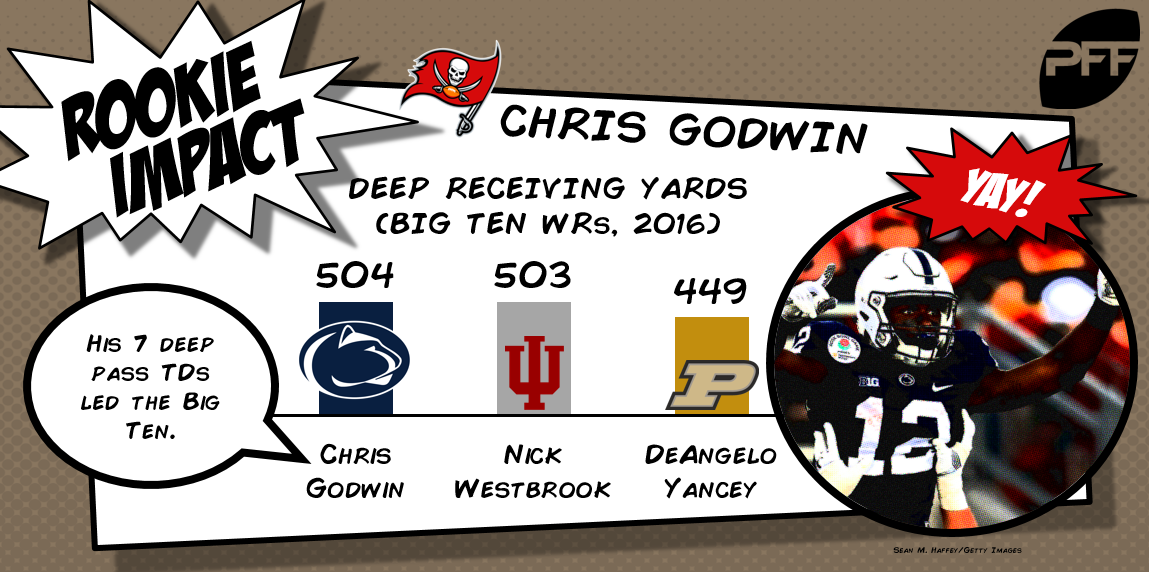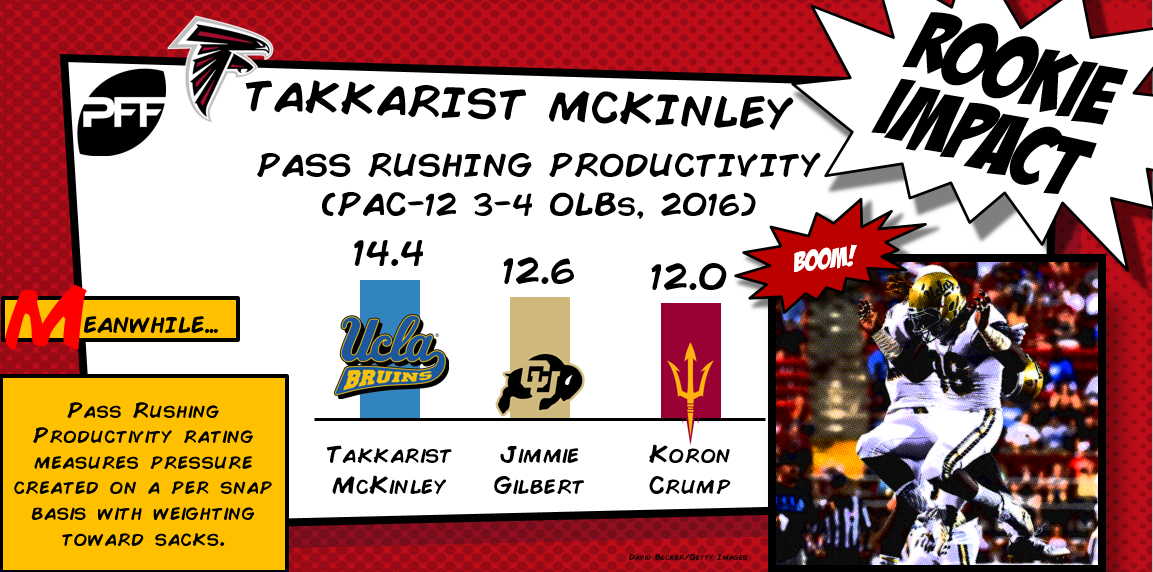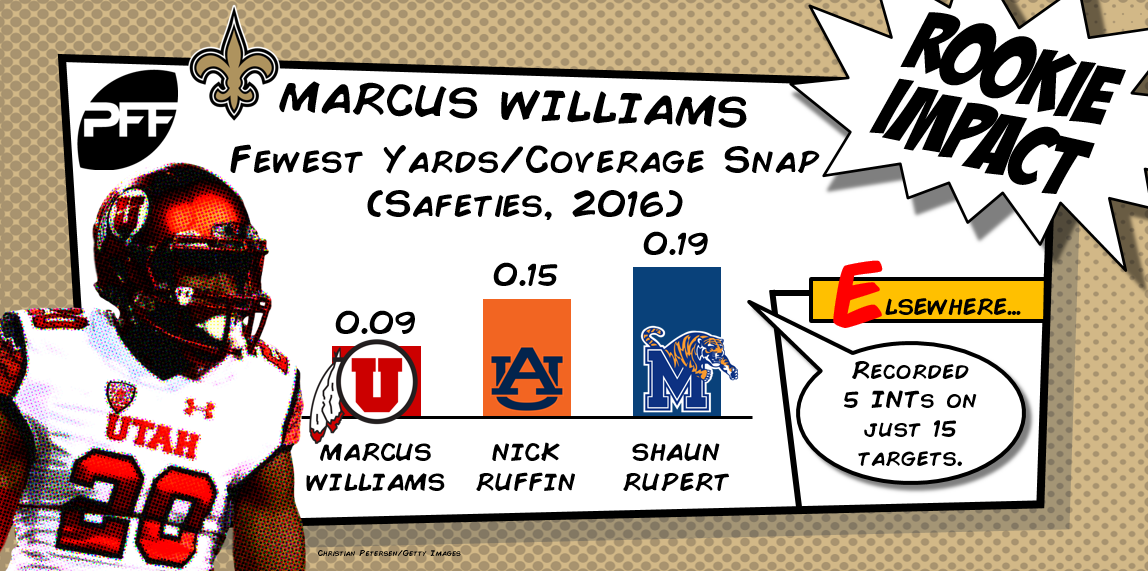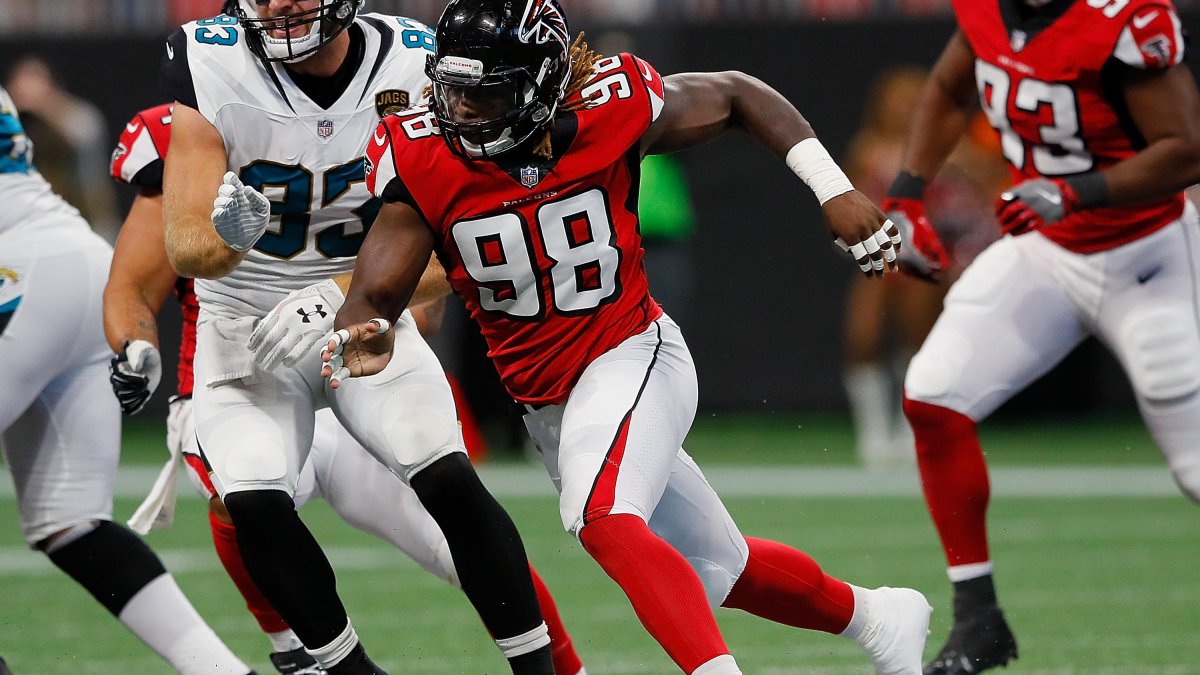As the NFL regular season draws closer, PFF takes a look at those rookies who should be very impactful on a team's success this season. Be it a first-round pick, or later, these rookies will look to supplant their roles in helping their new team this season, and beyond.
While we've taken a look at the AFC East, AFC South, NFC East, NFC North and the NFC West and now today we'll also examine those impactful rookies in the NFC South:
WR Chris Godwin, Penn State
The Buccaneers approached the offseason aggressively with the plan of adding weapons for their franchise quarterback in the making, Jameis Winston. One of those additions is third-round draft pick, Chris Godwin. Godwin currently resides behind starters Mike Evans and DeSean Jackson, and will compete for targets alongside players like Adam Humphries, O.J. Howard and Cameron Brate, among others.
In 2016, Winston earned a passer rating of 86.9 on post routes, which was 15.1 points lower than the league average. Godwin should improve that mark, as he caught 10-of-13 targets for 330 yards and two scores on posts last season at Penn State. Winston, who was tied for eighth-most deep targets (20-plus yards downfield) in 2016, will appreciate Godwin's deep-play ability which he showed last season in racking up 504 deep receiving yards (20th among NCAA WRs) and seven touchdowns. Godwin also showed ability as an aggressive blocker, where he earned the 10th-best blocking grade among NCAA wide receivers in 2016, which should help get him get on the field.
RB Christian McCaffrey, Stanford

Running back, receiver, returner, call him what you want, Christian McCaffrey is a weapon. A big-play threat any time he touches the ball, McCaffrey is the type of player you could build an offense around. In 2015, he led all running backs with a receiving grade of 90.3. In 2016, he forced 43 missed tackles as a runner and 21 as a pass-catcher. He is excellent in open space, but can grind out the tough yards as well, as he improved his yards after contact per attempt to a solid 3.3, and was not tackled on first contact 31.8 percent of the time in his final year at Stanford. He can do any one role better than most, but it's his versatility which sets him apart.
In making McCaffrey the eighth pick overall of the 2017 NFL Draft, the expectation is the Panthers will get him heavily involved from Day 1. While Jonathan Stewart is a fine runner in his own right, and Cam Newton is always a threat to take off from the pocket, McCaffrey instantly becomes the Panthers most dangerous ball-carrier. He could act as a stellar slot receiver if that was his primary role as well. By the end of the 2017 season, we may be saying he is the Panthers best offensive player, period.
Edge Takkarist McKinley, UCLA

Vic Beasley was a breakout player in 2016, converting pressures at a ridiculous rate to lead the league with 16 sacks despite producing just 45 total pressures, which ranked 18th among 3-4 outside linebackers. An aging Dwight Freeney was productive as pass-rusher, but he will not return to the team in 2017. In a move to get younger and upgrade the pass rush, the Falcons drafted Takkarist McKinley at the end of the first round, who they hope can take advantage of the extra attention Vic Beasley should attract from opposing offensives.
McKinley was effective at UCLA in 2016, earning a 14.4 pass-rush productivity mark, which was 10th in the nation among outside linebackers. He also had success rushing from both sides; 32 of his pressures came from the right side, and 24 from the left. If the rest of the Falcons defense can stay healthy and hold up in coverage long enough, McKinley could prove very useful as a pass-rusher in 2017. In his final year at UCLA, he earned a pass rush productivity rate of 26.2 when quarterbacks threw the ball in 2.6 seconds or more, which was 5th best in the NCAA.
S Marcus Williams, Utah

Marcus Williams enters a Saints secondary equipped with some young talent which should be on the rise after being one of the worst defenses in recent years on an annual basis. Vonn Bell and Kenny Vaccaro are the top two safeties on the roster, and Marcus Williams will be behind them on the depth chart to begin his career. He should however receive plenty of snaps in a rotation that may be similar to how the Patriots use Duron Harmon behind Devin McCourty and Patrick Chung.
Williams led the NCAA in 2016 in a number of PFF signature stat categories such as yards per cover snap (0.09), cover snaps per target (27.5), and cover snaps per reception (58.9). He is effective against the run as well as he had the highest run-stop percentage of all FBS safeties in 2016, while earning the second-highest tackle efficiency for his position against the run. Williams rarely gets beaten for long touchdowns and seems to be adept at always being in the right position, but is also capable of being a playmaker as his 10 interceptions and two pass breakups over the last two years would suggest. Williams may be asked just to play a certain role, but he is capable of performing that role extremely well.








 © 2024 PFF - all rights reserved.
© 2024 PFF - all rights reserved.